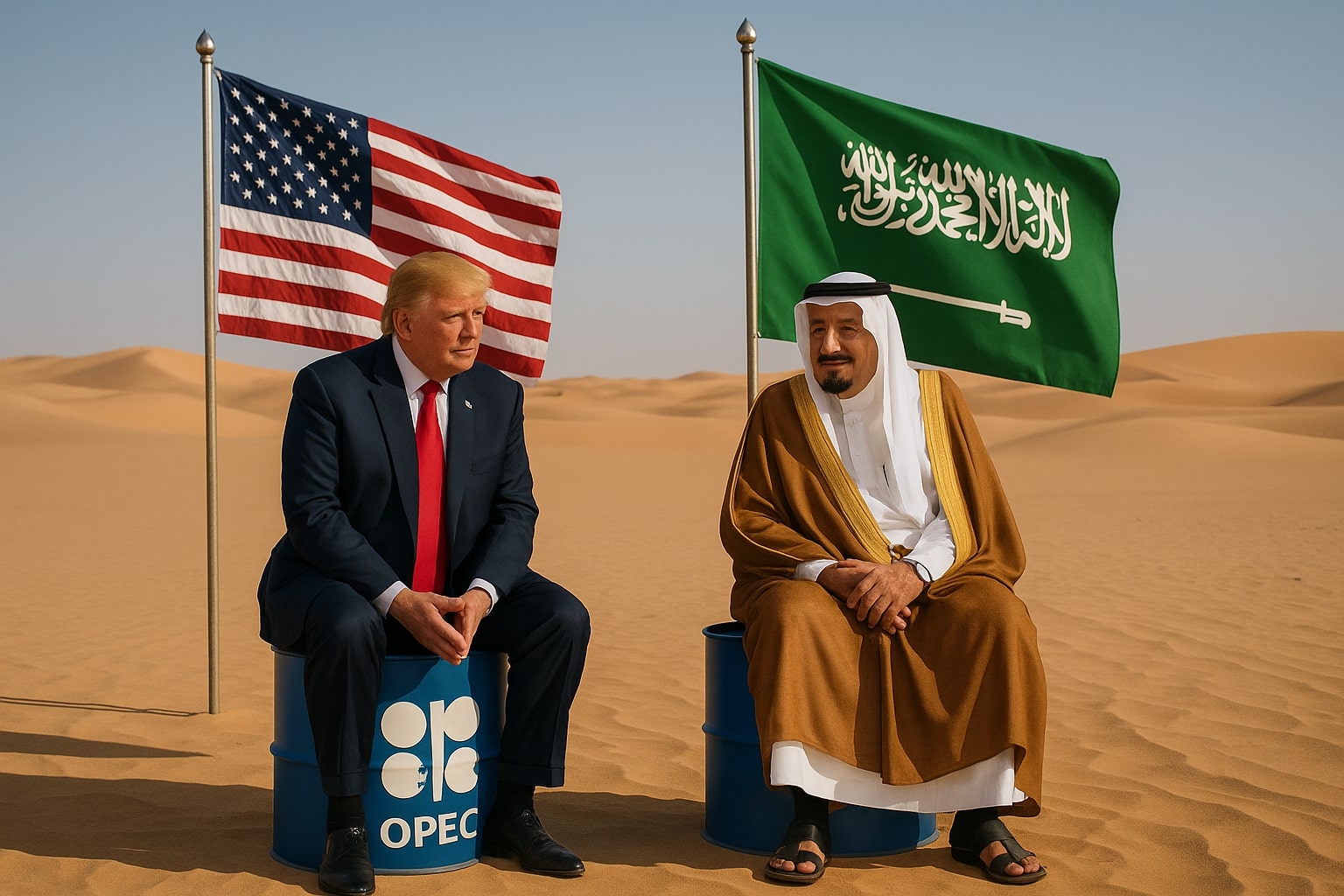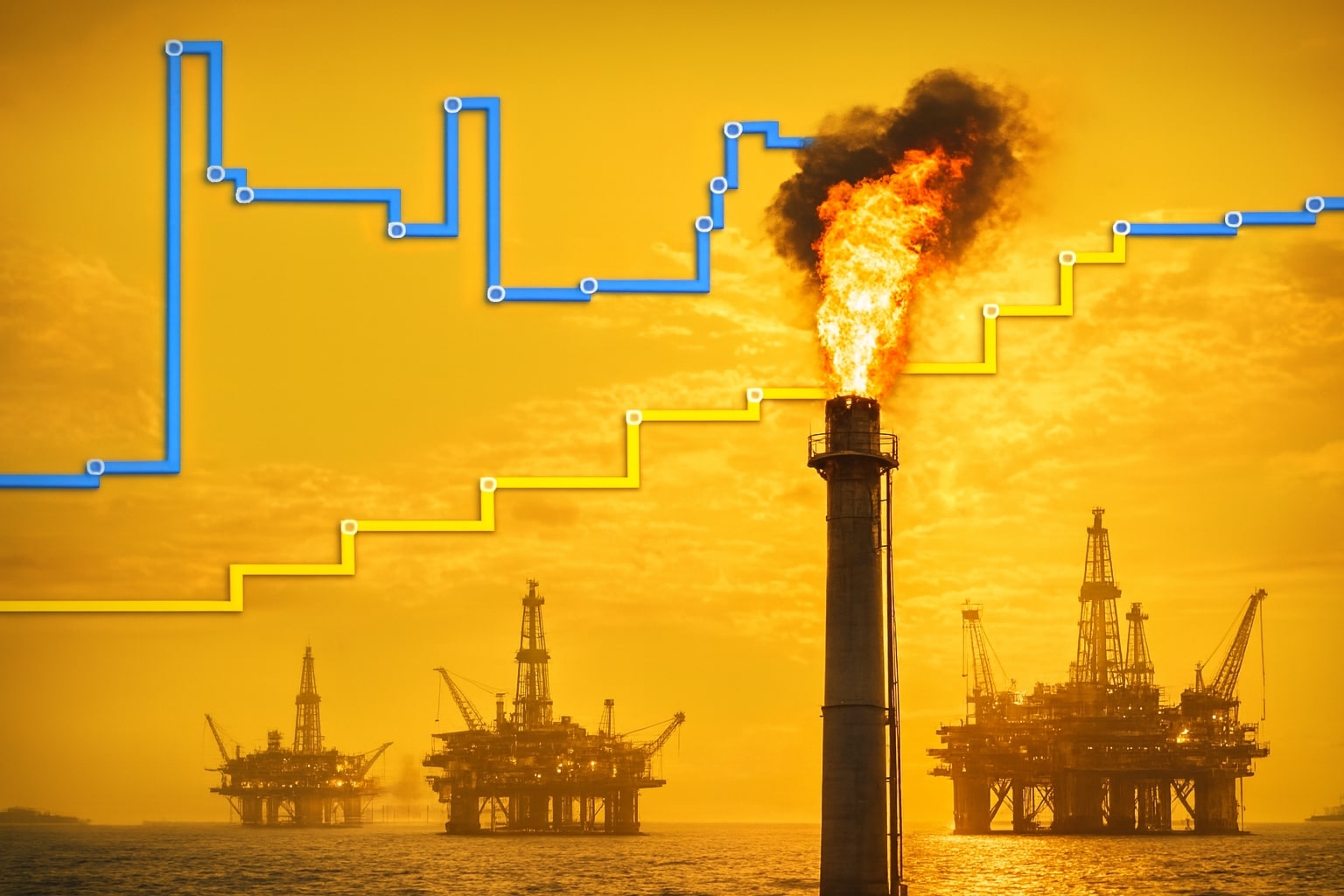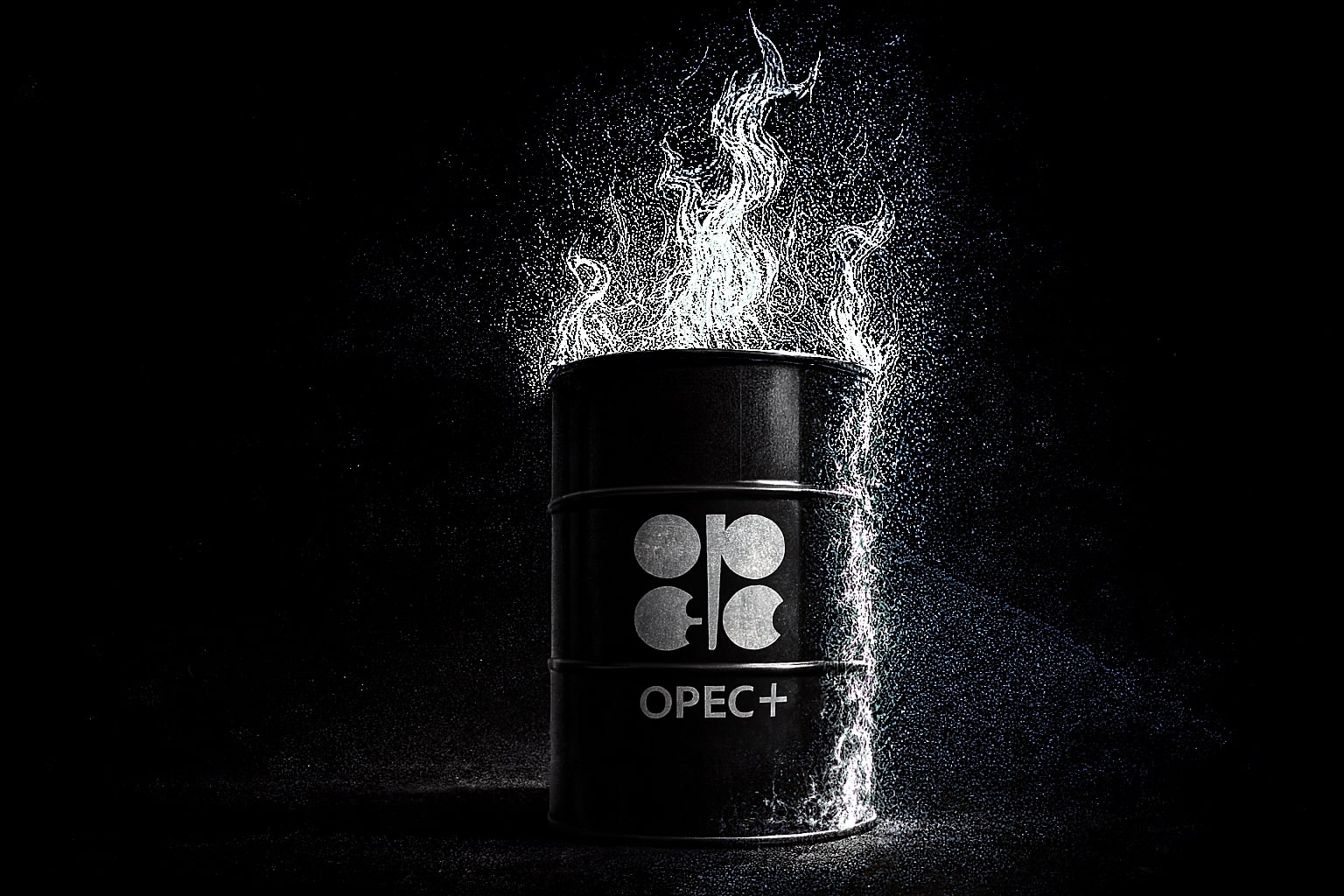Oil holds gains as WTI hovers at $68.65 and Brent steadies near $70.50
Crude prices are grinding higher with WTI (CL=F) holding above $68.60 and Brent (BZ=F) above $70.50, after flirting with two-week highs. Despite bearish builds in U.S. crude inventories, gasoline demand surged over the July 4 weekend, helping offset fears of oversupply. The EIA reported a surprise 7.1 million barrel build in crude stocks, but also noted a 2.7 million barrel draw in gasoline, which signals intense summer driving demand across the U.S. Northeast and Midwest.
This demand spike pushed gasoline consumption to 9.2 million barrels per day, up 6% week-over-week. The refinery utilization rate fell slightly, suggesting processors are running near capacity and temporarily throttling throughput. That leaves a gap that markets are reading as mildly bullish — with crude piling up but end-product demand keeping the cycle tight.
OPEC+ to boost output in August as Saudi strategy tilts toward market share
In a strategic shift, OPEC+ will raise production by 548,000 barrels per day starting August, outpacing previous monthly increases of roughly 400,000 bpd. This move is being framed not as a bearish flood but as a calculated effort by Saudi Arabia and Russia to protect market share, especially in Asia. Market watchers are betting the coordinated increase will be absorbed by rising demand rather than crashing prices.
Saudi Arabia has not abandoned price discipline entirely — it continues to cap exports under 6 million bpd, a threshold seen as consistent with a Brent floor above $68–$69. Russia, meanwhile, is selling more barrels to India and China at a slight discount but is expected to hold production near 9.5 million bpd through Q3.
Trump tariffs inject volatility risk as crude watches copper and semis
Geopolitics re-entered the oil market as former President Trump floated 100% tariffs on Chinese goods, including select tech components and possibly extending to foreign-made fuels or chemicals. Although oil wasn’t directly targeted, the tariff chatter weighed on broad commodities.
If copper and semiconductor tariffs are formalized, that could hit Chinese industrial demand, indirectly softening energy demand curves. Traders are watching July 15–18, when Trump is expected to announce the second wave of tariffs — a potential downside trigger for Brent if paired with weak refinery margins or tepid global PMIs.
U.S. production forecast slips to 13.37 mbpd as shale rig count retreats
The EIA trimmed its 2025 U.S. crude output forecast to 13.37 million bpd, from a previous estimate of 13.42 million. While marginal, it marks the second straight month of downward revisions, reflecting pressure on shale economics under $70 oil. Rig counts have slipped to their lowest level since 2021, with Permian activity flatlining and Bakken output weakening.
Falling U.S. growth expectations mean less marginal supply at current prices, which could give Brent and WTI more room to advance toward $72 and $70 respectively if Asian imports stay elevated through August.
Technical resistance seen at $68.90 for WTI and $71.60 for Brent
Technically, WTI is boxed in between $66.50 and $68.90, with multiple failed intraday attempts to break above $69. A sustained move through $68.90 would target $70.30 next. Brent shows a similar posture — support at $69.60, resistance near $71.60, and a potential breakout zone above $72.30 if volumes accelerate.
RSI indicators for both contracts sit near 57–59, not yet overbought, suggesting upside remains intact if macro conditions stabilize. However, if inventories continue rising and China import data weakens, both benchmarks could retest their 50-day moving averages.
Refined product demand cushions crude build ahead of Q3 heat wave
While crude stockpiles climbed, the drop in gasoline and distillates underscores strong end-user demand, particularly in the transportation and freight sectors. U.S. demand is seasonally strong, but the surprise is that it remains resilient even as pump prices flirt with local highs.
Gasoline prices have averaged $3.72 per gallon nationwide over the past week, yet volume continues to rise. If heatwaves intensify in July–August, air conditioning demand will likely spill into diesel consumption via trucking and delivery logistics.
Market read: Brent needs $72 breakout, WTI must hold $68 to stay bullish
The market remains tightly rangebound, but positioning is leaning bullish. A Brent close above $71.60, particularly with confirmation on weekly charts, opens the path to $73.50 and then $75. For WTI, closing above $68.90 is key — otherwise we risk a return to $66.
Options flow shows increased call activity at $70 WTI and $75 Brent, with skew favoring upside hedges. The physical market remains balanced, not oversupplied, but sentiment is extremely sensitive to macro shocks or unexpected inventory builds.
Verdict: Hold short term, lean bullish into late July
Given the current mix of strong product demand, limited U.S. growth, and tactical OPEC+ expansion, the crude complex remains in a hold-to-bullish zone. Watch Brent’s $71.60 resistance and WTI’s $68.90 line. If both are cleared, we move into Q3 bullish territory targeting $75+ Brent and $71 WTI.
However, any tariff escalation or sharp drop in Asian imports would quickly reverse this stance. For now, accumulate on dips toward $67 (WTI) and $69.30 (Brent) with stops under $65 and $68 respectively.




















